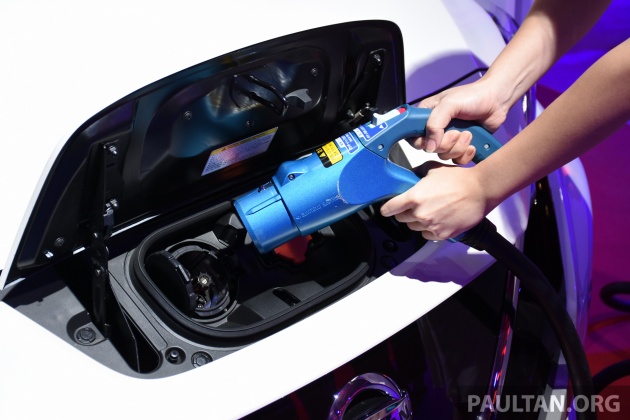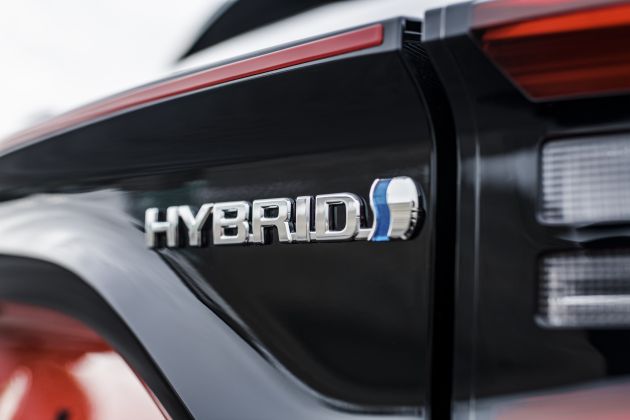Malaysia’s proposed EV roadmap – PHEVs not best way to drive electrification forward, says analyst report
An insight into Malaysia’s path towards electrification was offered earlier this week when the Low Carbon Mobility Blueprint (LCMB) 2021-30 surfaced into public view. The design plan, which outlines proposals on ways to address emissions in the land transport sector, brought out in greater detail certain aspects of how electrification will be pushed along from an automotive viewpoint.
Among the measures that are planned is the establishment of a national target of having 7,000 AC public charging points and 500 DC charging points as well as incentives, including tax exemption for electric vehicles (EV) to the tune of 100,000 units.
Of this, an allocation of 10,000 units are set to be for battery EVs (BEV), with full excise duty and import tax exemption being given for the importation of completely built-up (CBU) units until the end of 2022. From 2023 to 2025, CBU EV units will be given a 50% import and excise duty exemption, in what is a bridging measure until locally-assembled BEVs become available on the market.
The remainder will be for plug-in hybrid (PHEV) units, with the consideration by the government that they are a necessary transition towards BEVs down the road. In terms of PHEV-specific incentives, tax exemption will be given for qualified CKD models, with 100% exemption being given until 2022, 75% exemption from 2023 to 2025, and 50% exemption from 2026 to 2030.


Sounds promising? Yes, and no, according to Maybank Investment Bank Research. In analysis reports it published in response to the LCMB, the research arm of the financial institution said that while the blueprint introduces some EV targets, more can be done to scale up the nationwide EV infrastructure and decarbonisation plan.
Maybank IB Research’s associate director Liaw Thong Jung said that the LCMB offered many positives in its proposed solutions, such as from the plans for an EV infrastructure, electrifying the public transport system and motorcycle segment as well as incentivising or penalising diesel emission level compliance.
However, he expressed less enthusiasm about other aspects of the proposed EV policy, especially the skew towards PHEVs and not full-electric EVs. He said such a move would fail to drive home the country’s aspiration to accelerate the transition from internal combustion engine (ICE) vehicles to BEVs.
Offering the lion’s share of the push to PHEVs, he argued, is something that would defeat the purpose of scaling-up the nationwide EV infrastructure and decarbonisation plan. For one, because they can be driven with their combustion engine, PHEV users do not charge them enough, which makes them less green than they are supposed to be.
Additionally, given that there would be less inclination or need for users of these to charge their cars, the high presence of PHEVs would also make the push towards the development of an essential public charging network that bit slower. He said that this remains a challenge in Malaysia, which only has 421 such charging points as of March 2021.
“Consumers tend to buy PHEVs solely for the lower price point attraction rather than for environment reasons. Until the policy re-focuses on BEVs, Malaysia is unlikely to inspire automotive companies to bring in their BEV pipelines or to relocate their BEV CKD plans here,” he wrote.
He added that challenges that stand in the way of accelerating EV adoption include affordability, charge time required, distance or range between charges, the reliability and availability of charging stations, as well as the variety in options of EV models.



The investment bank said that among the policies and incentives that the government can consider to boost EV demand beyond that already defined is to introduce recurring fiscal incentives such as fuel taxes or a dynamic price of electricity and one-time fiscal incentives such as tax exemptions or carbon pricing.
Additionally, non-fiscal incentives such as special lane access, free parking, toll exemptions and access to low emission zones could also be some of the means that can be introduced to encourage EV take up.
From a regional perspective, Liaw notes that while EV adoption was still at at a low penetration rate of below 1% in ASEAN, things would accelerate in line with global development. He said that Thailand, Indonesia and Singapore will remain ahead of the pack in terms of adoption and developing EV policies.
The report also foresees faster adoption of electric motorbikes than electric cars across the region on the whole. Besides vehicle cost, the two-wheeled segment has a ready-made commercial solution in place, in the form of swappable batteries (eliminating range anxiety issues) and deployable infrastructure.
The post Malaysia’s proposed EV roadmap – PHEVs not best way to drive electrification forward, says analyst report appeared first on Paul Tan's Automotive News.
from Paul Tan's Automotive News
Read The Rest:paultan...




Post a Comment